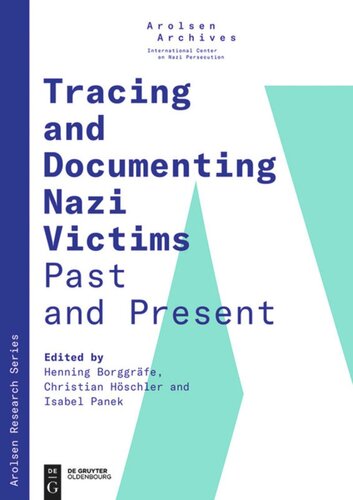

Most ebook files are in PDF format, so you can easily read them using various software such as Foxit Reader or directly on the Google Chrome browser.
Some ebook files are released by publishers in other formats such as .awz, .mobi, .epub, .fb2, etc. You may need to install specific software to read these formats on mobile/PC, such as Calibre.
Please read the tutorial at this link: https://ebookbell.com/faq
We offer FREE conversion to the popular formats you request; however, this may take some time. Therefore, right after payment, please email us, and we will try to provide the service as quickly as possible.
For some exceptional file formats or broken links (if any), please refrain from opening any disputes. Instead, email us first, and we will try to assist within a maximum of 6 hours.
EbookBell Team

5.0
90 reviewsOpen Access
After World War II, tracing and documenting Nazi victims emerged against the background of millions of missing persons and early compensation proceedings. This was a process in which the Allies, international aid organizations, and survivors themselves took part. New archives, documentation centers and tracing bureaus were founded amid the increasing Cold War divide. They gathered documents on Nazi persecution and structured them in specialized collections to provide information on individual fates and their grave repercussions: the loss of relatives, the search for a new home, physical or mental injuries, existential problems, social support and recognition, but also continued exclusion or discrimination. By doing so, institutions involved in this work were inevitably confronted with contentious issues—such as varying political mandates, neutrality vs. solidarity with those formerly persecuted, data protection vs. public interest, and many more. Over time, tracing bureaus and archives changed methods and policies and even expanded their activities, using historical documents for both research and public remembrance. This is the first publication to explore this multifaceted history of tracing and documenting past and present.